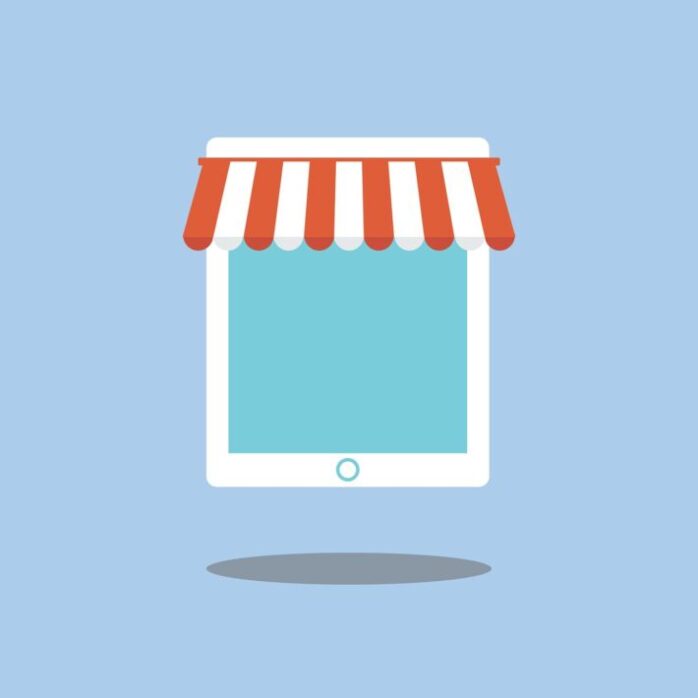
It is not an unknown fact that the online retail sector has been soaring since 2014 and is estimated to make annual sales worth $6.8 trillion by 2024. With online markets like Pinduoduo becoming highly valued even before completing five years of establishment, everyone wants to know the secret behind a successful online business platform.
Regardless of the products being sold, an online store guarantees more opportunity, greater affordability, and flexibility for entrepreneurs when compared to physical stores. Setting up an online store that brings in great profits and at the same time builds an image for the brand can be a demanding task.
This article has been put together to point out the basic structure to follow while setting up an e-commerce website. These steps show the aspiring entrepreneur how to get their business running, and the established merchant how to get better at their e-commerce game on-point.
Finding That One Product That Sells

Picking a product to sell is the first step in setting up an e-commerce business. Before settling on a product, make sure that it is in demand and can generate profits despite competition. To ensure this, remember to research thoroughly into the monthly sales estimates, competitor reviews, and sales ranks data.
Look for items that have stunning reviews and sales volume; this emphasizes the demand for the commodity in the market. In order to make things easier for the seller, go for products that are easy to manufacture. At the same time, when the items demand little to no effort in terms of storage and shipping, the entrepreneur has a lesser workload.
In addition, while going through the immense amount of data, set a few requirements for the product. For example, products that sell all year round are bound to do better than seasonal ones, so choosing an item with low seasonality is undoubtedly the wise choice. Furthermore, customer satisfaction always gives way to more sales, so decide on products that can be improved according to popular opinions.
Research Your Competition & Target Market

The next step in building an online retail platform is to find a population to appeal to. Luckily, with the advent of social media, finding a group of people interested in a certain product is not a hassle anymore.
Therefore, while creating a business plan, with the help of platforms like Facebook, the dealer can find detailed demographics to cater to. A point to be noted while forming such marketing strategies is that the competitors may also think similarly.
Therefore, always research the major competitors that the e-commerce business will face. In order to not lose customers to the competition, try to find ways to make the brand more unique and attract the buyers by offering something different from the competitors. Here is where factors like customer satisfaction, product quality, and brand image come into play.
Source For A Global Manufacturer

Most of the budding entrepreneurs give up on their business ideas from the expected inability to meet customer demands. For example, manufacturing and shipping of the product do not have to be done by the dealer themselves. Instead, the job can be done by experienced manufacturers.
In a way, contracts with global manufacturers have more benefits than just assembling the products. For an online store wishing to cater to an international target population, easier shipping is a bonus of collaborating with a global manufacturer.
Additionally, the cost of production and the time taken to produce the commodity is lesser when the manufacturing is done by established manufacturers. This cost-cutting step is crucial when the start-up business is low on budget.
Create A Brand Persona

Building an effective brand persona is an essential step in starting an e-commerce business from scratch. The brand image is what appeals to the target population to make the purchase. Therefore, choosing the brand name, logo, and other design details has to be done with utmost care. Whether hiring a designer or creating on your own using tools like DesignHill, canva or some other, one has to care of brand guidelines
While naming the store, make sure that the chosen brand name fits the niche. When there is a dissonance between the brand name and the products sold, the first-time customers become confused about the quality of the service offered by the brand.
For example, when a store selling products for corporate clothing comes with a persona appealing to the teen population, the target population is bound to have doubts about making a purchase. Similarly, the brand logo and aesthetics of the website should remain consistent with the purpose of the store.
Setting Up Your Store

After putting in the work to choose the ideal products, researching the target population, and creating a brand image, the next step is to set up the store for public use. Make sure to purchase the domain name and hosting as well as to get the business licenses and permits.
One major factor to pay attention to in this step is choosing the perfect e-commerce platform for your business. Some of the best platforms for fresh business ventures are Wix, Shopify and BigCommerce.
It is important to make the landing page of the website attractive, easily accessible, and simple to navigate. Studies have shown that most buyers click away from a webpage when it takes too long to load or does not render well on mobile devices. Hence, make sure that the landing pages are appealing and simple to browse through.
Marketing

Now that the e-commerce business store is set up, the only thing left is to generate sales. To see a significant rise in conversion rates, the online store and its products have to be marketed to the right audience.
Here is where the social media platforms come in handy again. These platforms, with their algorithm, engage the target population when the e-commerce business has a strong online presence. Besides, the content that is displayed on the social media pages of the online store creates brand awareness and image.
Another way of efficient marketing is Search Engine Optimizing the business webpage. Doing so will result in a higher ranking by the Google algorithm and this generates more traffic for the online store. Almost 90% of the customers of online retail stores use social media and Google search engines to make their decisions. Thus, for a budding online store, using these efficient and low-cost marketing strategies boosts sales by a large margin.
Start Your E-Commerce Today

Running an e-commerce business is by no means an easy task. Setting up an online retail store requires careful planning and execution. Nonetheless, it is non-negotiable in this age to refrain from expanding into e-commerce.
The steps given in this guide are the quickest steps to get an online store up and running. They may or may not be suitable for everyone, so go ahead and tailor them to get the best results.











